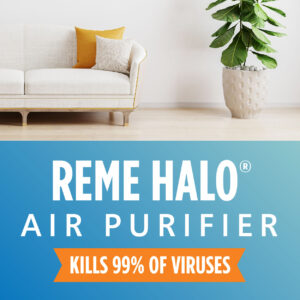Asthma is a serious lung disease.
* During an asthma attack, the airways get narrow, making it difficult to breathe.
* Symptoms of asthma include wheezing, shortness of breath, and coughing.
* Asthma can even cause death.
 If you have asthma or a child with asthma, you are not alone.
If you have asthma or a child with asthma, you are not alone.
* About 17 million Americans have asthma.
* Asthma is the leading cause of long-term illness in children.
The air that children breathe can make a difference.
* Asthma may be triggered by allergens and irritants that are common in homes.
* Help your child breathe easier: consult a doctor and reduce asthma triggers in your home.
Clear Your Home Of Asthma Trigger
Below are five common asthma triggers found in homes and what you can do to reduce you and your child’s exposure to them.
- Not all of the asthma triggers listed here affect every person with asthma.
- Not all asthma triggers are listed here.
- See your doctor or health care provider for more information.
Secondhand Smoke
Asthma can be triggered by the smoke from the burning end of a cigarette, pipe, or cigar and the smoke breathed out by a smoker.
- Choose not to smoke in your home or car and do not allow others to do so either.
Dust Mites
Dust mites are too small to be seen but are found in every home.
Dust mites live in mattresses, pillows, carpets, fabric-covered furniture, bedcovers, clothes, and stuffed toys.
- Wash sheets and blankets once a week in hot water.
- Choose washable stuffed toys, wash them often in hot water, and dry thoroughly. Keep stuffed toys off beds.
- Cover mattresses and pillows in dust-proof (allergen-impermeable) zippered covers.
Pets
Your pet’s skin flakes, urine, and saliva can be asthma triggers.
- Consider keeping pets outdoors or even finding a new home for your pets, if necessary.
- Keep pets out of the bedroom and other sleeping areas at all times, and keep the door closed.
- Keep pets away from fabric-covered furniture, carpets, and stuffed toys.
Molds
Molds grow on damp materials. The key to mold control is moisture control.
If mold is a problem in your home, clean up the mold and get rid of excess water or moisture.
Lowering the moisture also helps reduce other triggers, such as dust mites and cockroaches.
- Wash mold off hard surfaces and dry completely. Absorbent materials, such as ceiling tiles and carpet, with mold may need to be replaced.
- Fix leaky plumbing or other sources of water.
- Keep drip pans in your air conditioner, refrigerator, and dehumidifier clean and dry.
- Use exhaust fans or open windows in kitchens and bathrooms when showering, cooking, or using the dishwasher.
- Vent clothes dryers to the outside.
- Maintain low indoor humidity, ideally between 30-50% relative humidity. Humidity levels can be measured by hygrometers which are available at local hardware stores.
Pests
Droppings or body parts of pests such as cockroaches or rodents can be asthma triggers.
- Do not leave food or garbage out.
- Store food in airtight containers.
- Clean all food crumbs or spilled liquids right away.
Try using poison baits, boric acid (for cockroaches), or traps first before using pesticidal sprays.
If sprays are used:
- Limit the spray to infested area.
- Carefully follow instructions on the label.
- Make sure there is plenty of fresh air when you spray, and keep the person with asthma out of the room.
Also… House dust may contain asthma triggers. Remove dust often with a damp cloth, and vacuum carpet and fabric-covered furniture to reduce dust build-up. Allergic people should leave the area being vacuumed. Using vacuums with high efficiency filters or central vacuums may be helpful.
When your local weather forecast announces an ozone action day, stay indoors as much as possible.
Posted by Wes Diskin
Continue Reading
Posted in AeroSeal, Air Cleaner, Air Purifier, Allergies, Asthma, Duct Cleaning, Duct Sealing, Filtration, IAQ, Indoor Air Quality, Respiratory Issues | Comments Off on Asthma Triggers and Information







 Do you value the health of your employees? More and more office employees are complaining about sick business syndrome (sbs). The
Do you value the health of your employees? More and more office employees are complaining about sick business syndrome (sbs). The  If you have asthma or a child with asthma, you are not alone.
If you have asthma or a child with asthma, you are not alone.